Hands-On Review – Chopard L.U.C XPS 1860 in stainless steel – High-end made accessible

It all began 20 years ago, when “in-house” and independent sourcing of movements were not yet in vogue across the watch industry. The presentation of a splendid micro-rotor movement manufactured in Fleurier, a watchmaking town of Val-de-Travers, gave birth to the Chopard L.U.C series, a highly respected collection among watch connoisseurs. This Chopard collection now celebrates its 20th anniversary, with the introduction of several models. Among these, the XPS 1860 houses the brand’s original micro-rotor movement in a steel case and is definitely worth a close look.
Back in the early 1990s, at a time when very few brands were manufacturing their own movements, Chopard – under the guidance of Karl-Fiedrich Schefeule – initiated a program to produce a movement of their own in Fleurier. In 1996, the brand proudly introduced the L.U.C 1860 watch, housing their first in-house movement, the calibre 1.96. This milestone gave birth to a remarkable collection of watches, embodying Chopard’s watchmaking expertise, and laid the foundations for numerous developments. It was christened L.U.C in homage to Louis-Ulysse Chopard, who founded the company in 1860 in Sonvilliers.
To celebrate the 20th anniversary of this emblematic collection, Chopard is paying tribute to the very first L.U.C model that featured the calibre 1.96. The new L.U.C XPS 1860 is proposed in pink gold as a limited edition of 100 pieces. More than that, the model is also proposed in steel. An interesting move as many L.U.C and watch aficionados were hoping to see this iconic micro-rotor calibre cased in a more accessible material.
The L.U.C XPS 1860 is an alluring, thin dress watch, a modern take on the first model of the collection. It is 40mm in diameter, a versatile and modern size. This needs to be compared to the 36.4 mm of the 1996 model, an elegant dimension no longer-adapted to current standards. With a thickness of 7.2mm and its shorts lugs, it wears extremely well. Interestingly, it was already available in steel (in a 2007 model, with a 39.5mm case), then removed from the catalogue and only produced in gold. Steel is now back.
Its dial is classic, elegant with a modern touch. It is silver-toned with a sun-burst satin-finished center – a Chopard L.U.C tradition the pattern radiates from the logo. It features different levels and applied hour markers, which adds depth and presence. The faceted rhodium-plated hands boast a distinctive design and indicate hours and minutes together with a small seconds. The date is shown at 6 o’clock. Some will enjoy the practicality of the indication while others might have preferred a pure, minimalist dial without date.
The XPS 1860 in steel sports an updated version of the calibre 96, dubbed L.U.C 96.03-L. This thin (3.3mm) automatic winding movement runs at 28’800vph. It has modern design and features an elegant bi-directional micro-rotor in 22 carat gold. Its twin mainspring barrels stacked one on top of the other (Twin technology) offer a comfortable power reserve of 62 hours. The two barrels operate in series to ensure a more constant energy flow and improve isochronism (check our article on taming power in mechanical watches in our technical guide). Its precision is COSC-certified.
This version of the movement is not as sophisticated as that of the XPS 1860 pink gold limited edition (bearing the Geneva seal) which is understandable as it is meant to be proposed at a more accessible price point. For instance, it does not feature the swan neck fine adjustment and Breguet overcoil. Still, the movement is magnificent and superbly finished. Its exquisite Geneva stripes, polished jewels sinks, micro-rotor engraving, beveling and perlage are in perfect harmony with its refined architecture.
One word about this movement
The Chopard L.U.C calibre 96 has often been compared with another iconic movement, the Patek 240. The Patek 240 is said to have been a (non-admitted) benchmark to develop the calibre 96. Both movements share common features and dimensions being ultra-thin with a similarly integrated micro-rotor. The modern construction of the L.U.C movement has strong arguments. Its twin barrels offer a pleasing power reserve while ensuring constant torque; its finishing is certainly on par with Patek Philippe – if not better on certain editions.
The L.U.C XPS 1860 is worn on a black hand-sewn alligator strap with pin buckle, which as usual for Chopard, shows an overall very pleasant quality and smoothness.
Conclusion
The Chopard L.U.C XPS 1860 combines understated elegance with rare watchmaking expertise and craftsmanship. The calibre 1.96 is simply stunning. While it can’t be called cheap for a steel watch at 8,290 Euros, it feels like great value for money, compared to what many competitors are charging – and compared to the gold edition at nearly 20k. Really worth a close look if you are looking for a fine high-end dress watch, in steel and thus at a much more accessible price. An excellent opportunity to enjoy a haute horlogerie movement with a watch that won’t kill your savings.
Technical specifications of the steel L.U.C XPS 1860
- Case: 40mm – steel case – sapphire crystals with anti-reflective coating on both sides – 30m water resistant
- Movement: calibre L.U.C 96.03-L – automatic winding with 22K micro-rotor – 65h power reserve – 28,800 vibrations/h – hours, minutes, small seconds and date indications – COSC certified
- Strap: black alligator leather with steel pin-buckle

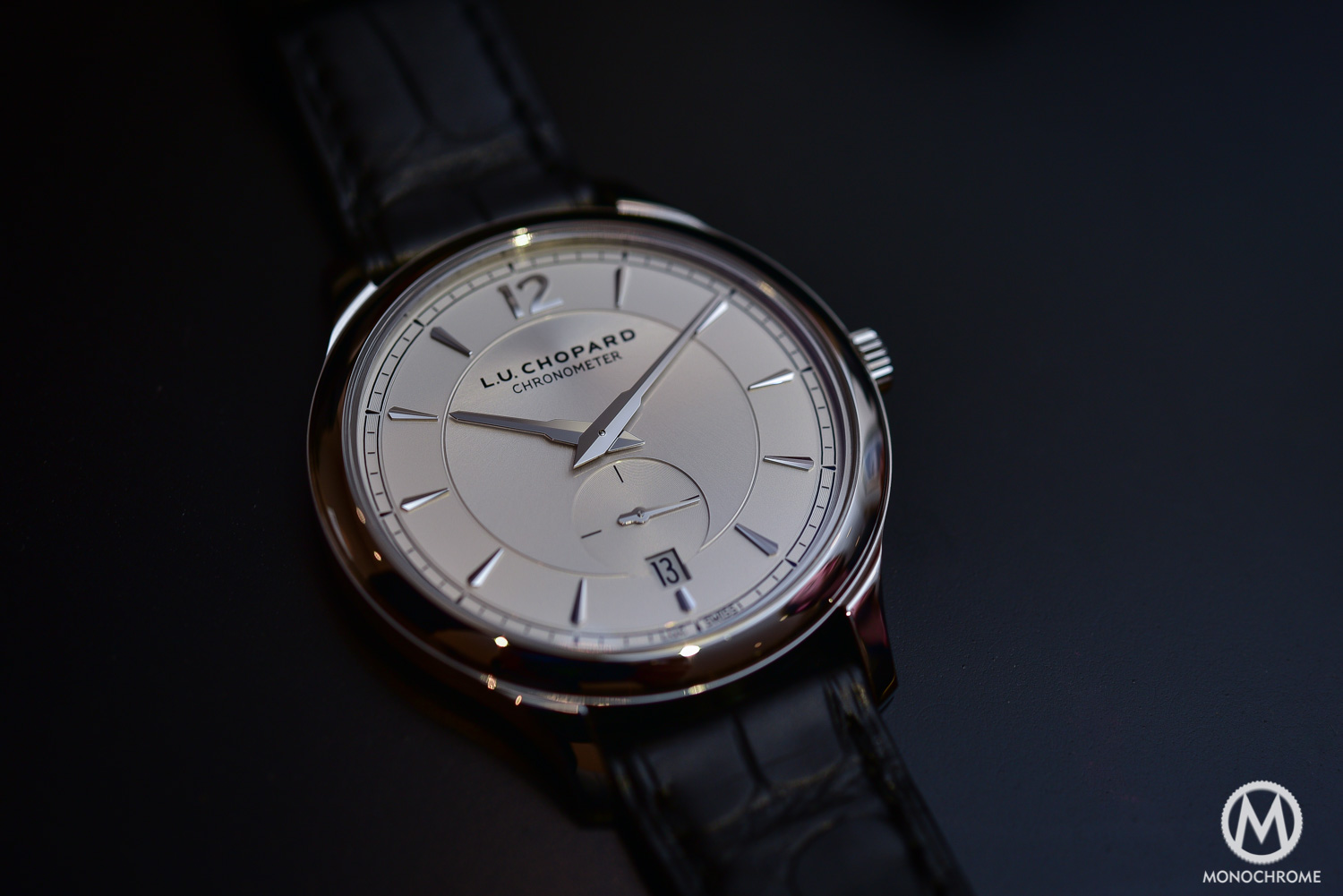
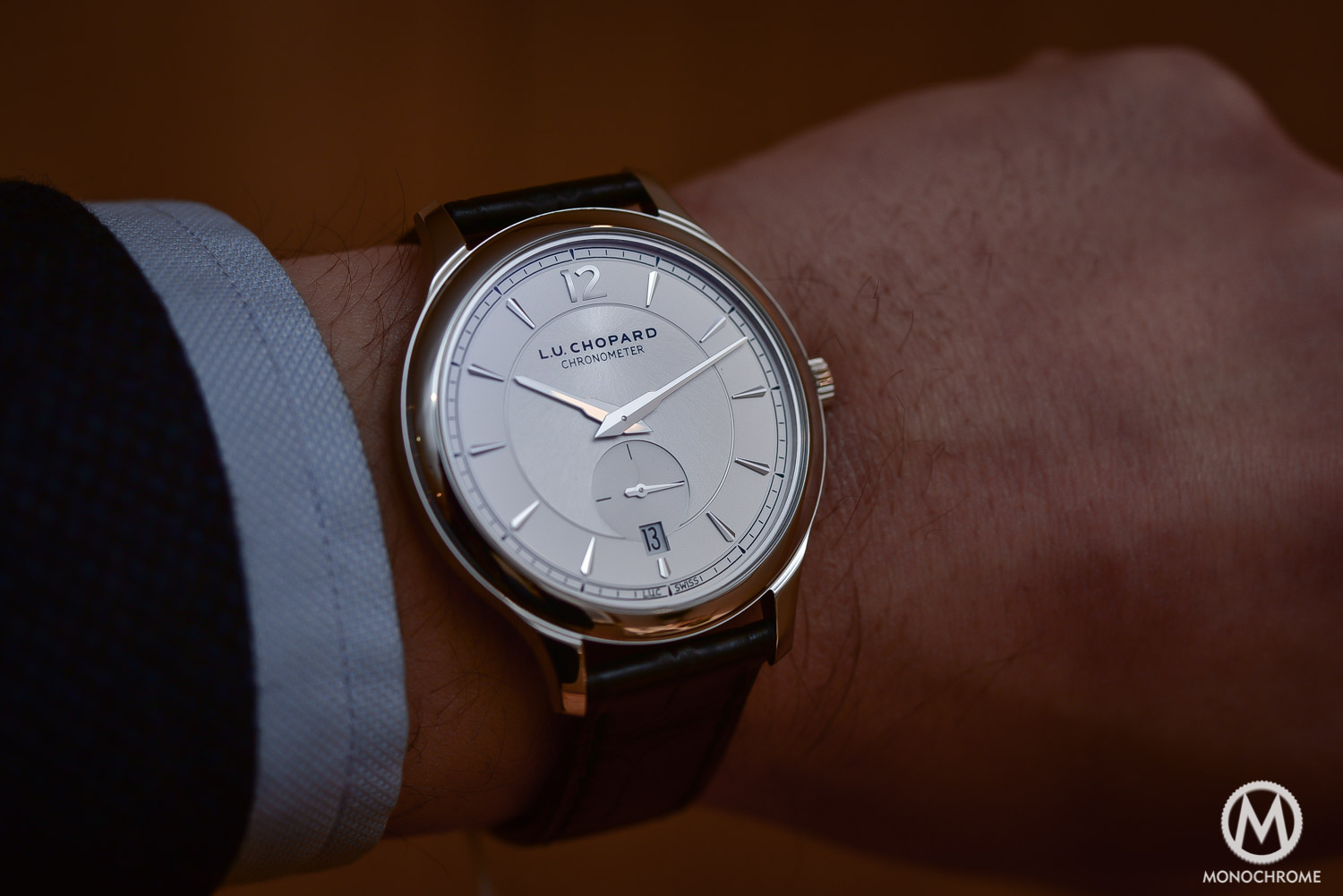
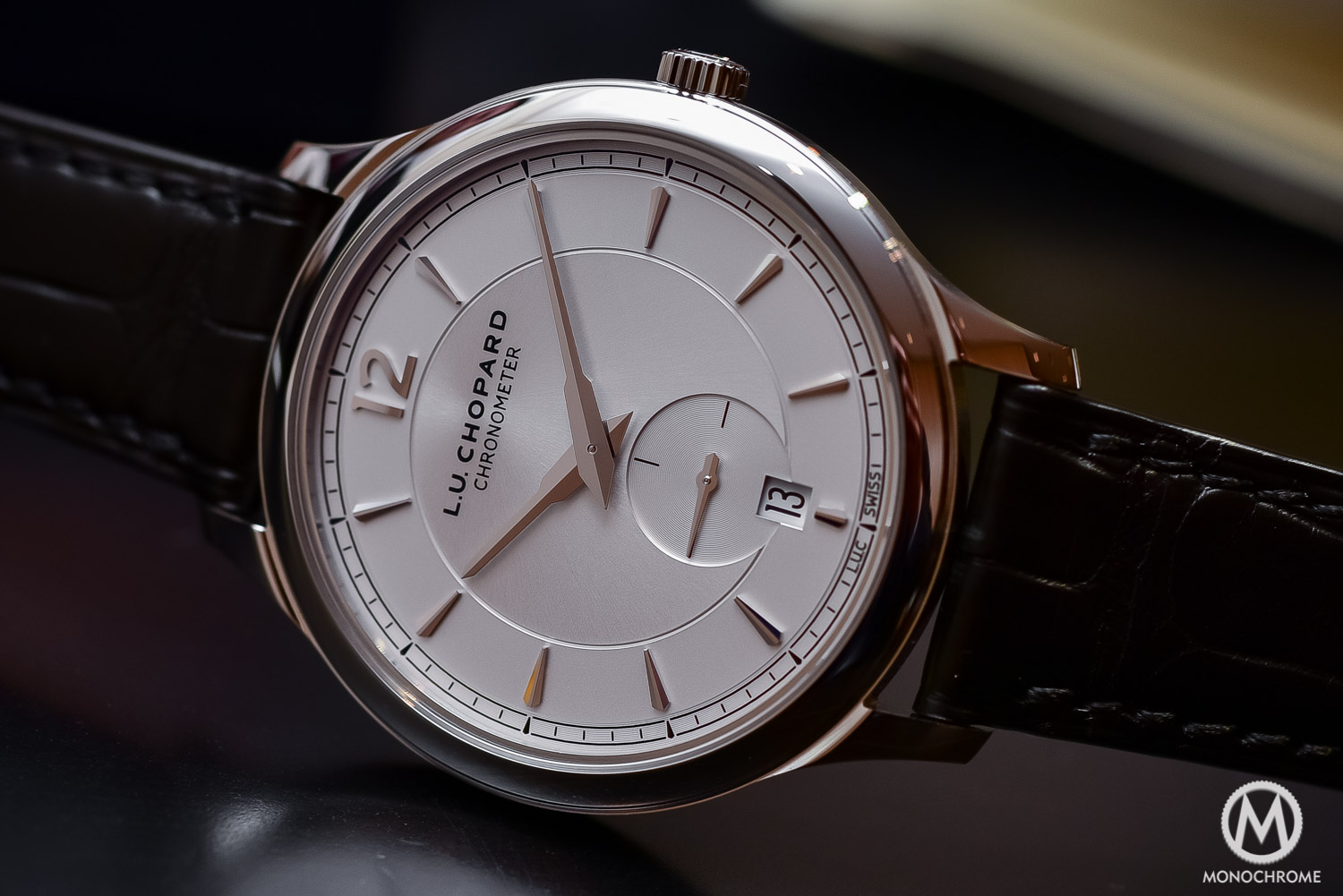
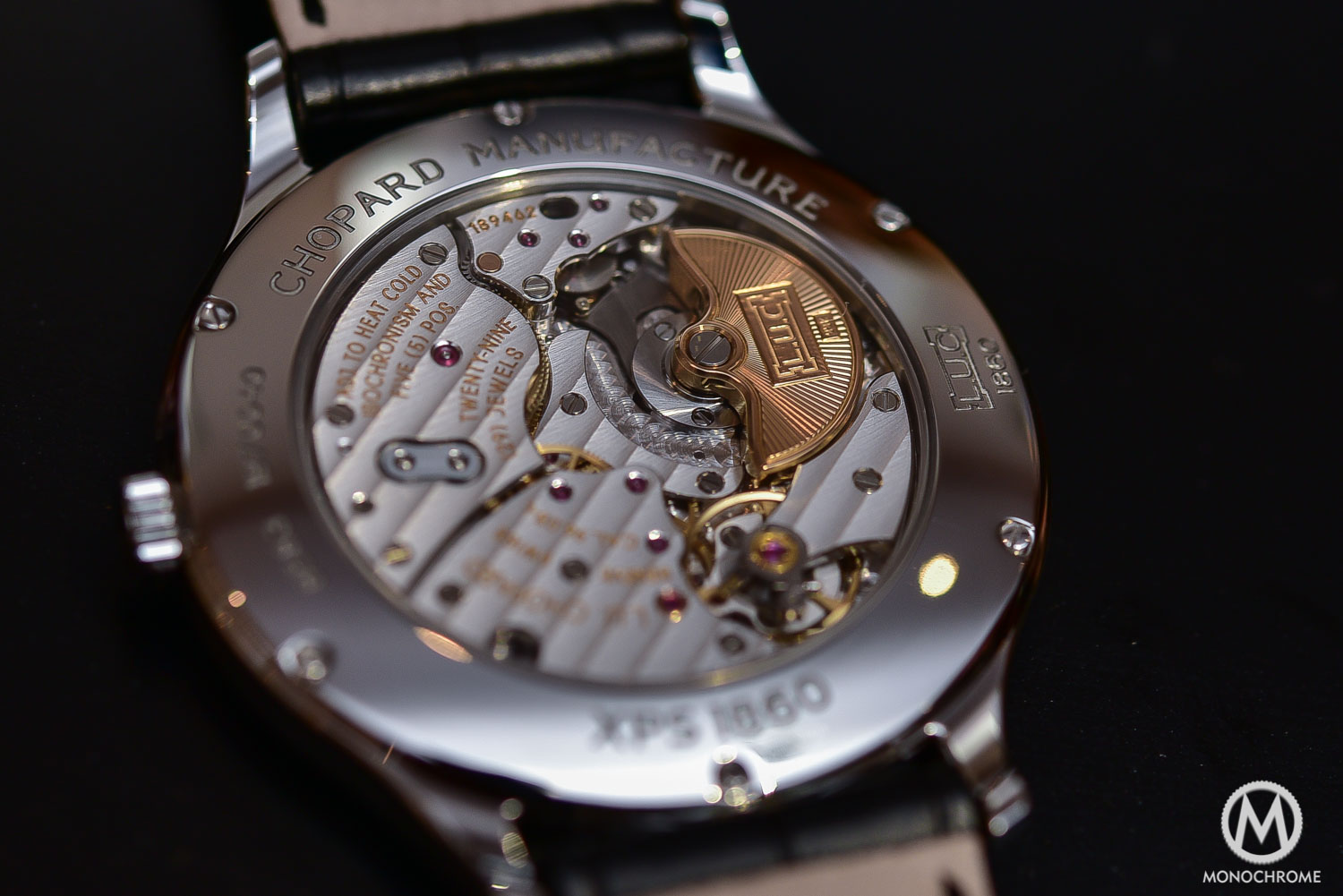
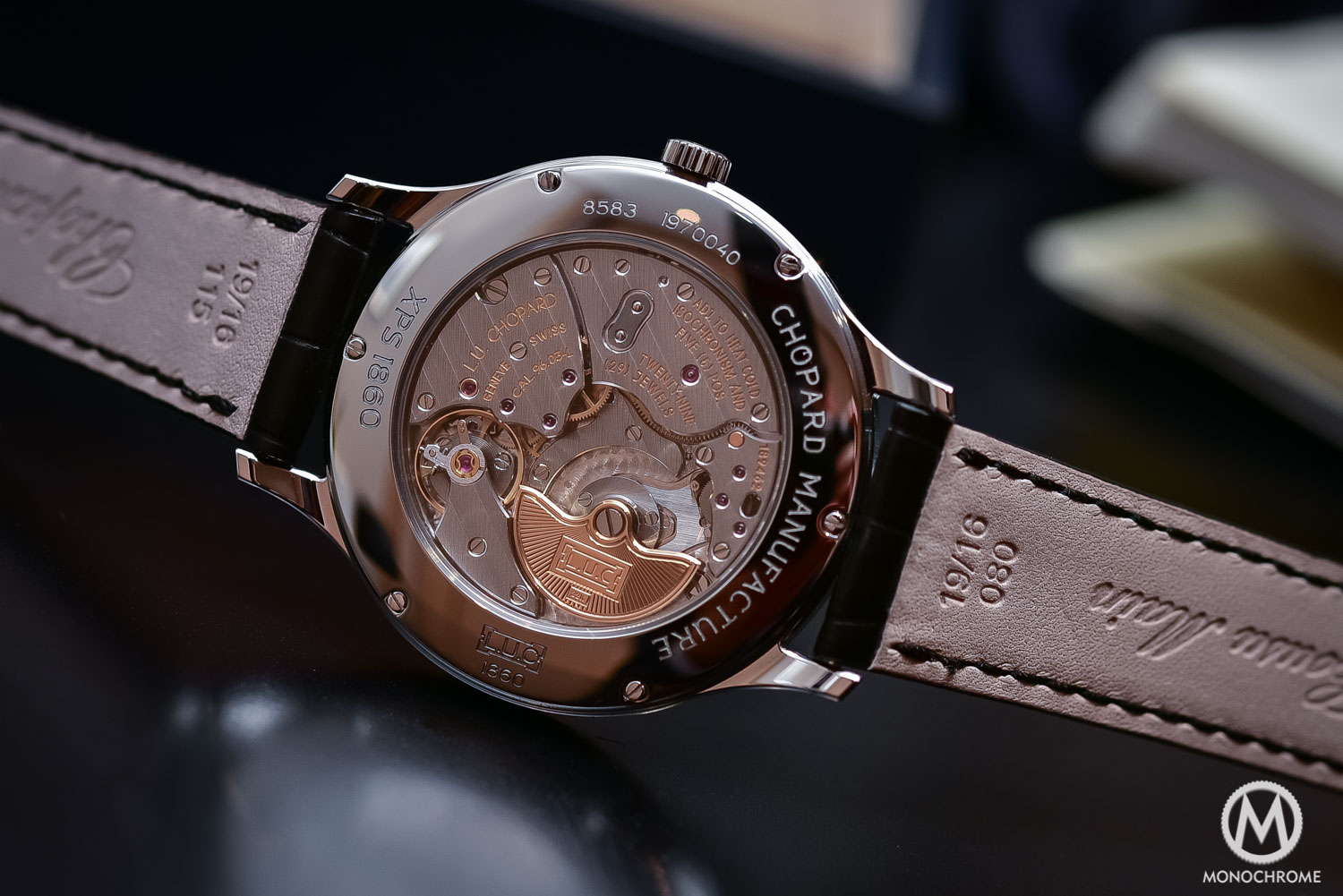




5 responses
While this is a beautiful watch and great value for a micro-rotor movement, I’d like to point out that Patek’s 240 is almost 0.8 millimetre thinner, which, to put in perspective, means that the Chopard movement is 30% thicker.
That’s not a percentage to sweep under the rug; in fact, that’s huge. Many watchmaker’s blood has been spilled for far less 🙂
Also, your comment about the finishing being better than Patek’s on “certain editions” leaves a fair bit to be desired: currently, Patek makes no less than 7 variations of the 240, from regular to skeletonised to a base in grand complications. So which edition of each movement are you comparing with which, in terms of finish?
From what I see above, this is nowhere near the finesse and precision of the Patek finish. On the other hand, I wouldn’t expect it to be, not at this price level.
As written in the article, the Patek Philippe 240 is iconic. A status duly earned. I do not think it depreciates the PP240 (still this can be a matter of opinion specifically for finishing) to state the Chopard 96 can stand up the competition. With regards to the fact that the PP240 is thinner does not make it superior nor inferior to me. A thinner design serves its purpose but comes with drawbacks.
Very beautiful and classic watches.
Xavier, I merely pointed out that:
– your assessment stating that the two share common dimensions is incorrect, because a 30% difference is significant, irrespective of whether you think it’s an advantage or not;
– the finishing comparison alludes to a better finish on some other models, without stating which those might be, and compared to which of Patek’s.
I believe you can successfully argue that the thinness difference is more than compensated by the increase in power reserve – about 50% more on the 96.
I’m just trying to do a bit of constructive criticism here.
In short, I’m simply saying that the article leaves a bit to be desired when dealing with the comparison with between the 96 and the 240, being inaccurate (technically, regarding movement sizing) and vague (journalistically – regarding comparison with other supposed editions).
Cheers!
This is a gorgeous watch…..You can’t do much more with steel.
I’d love to have one.